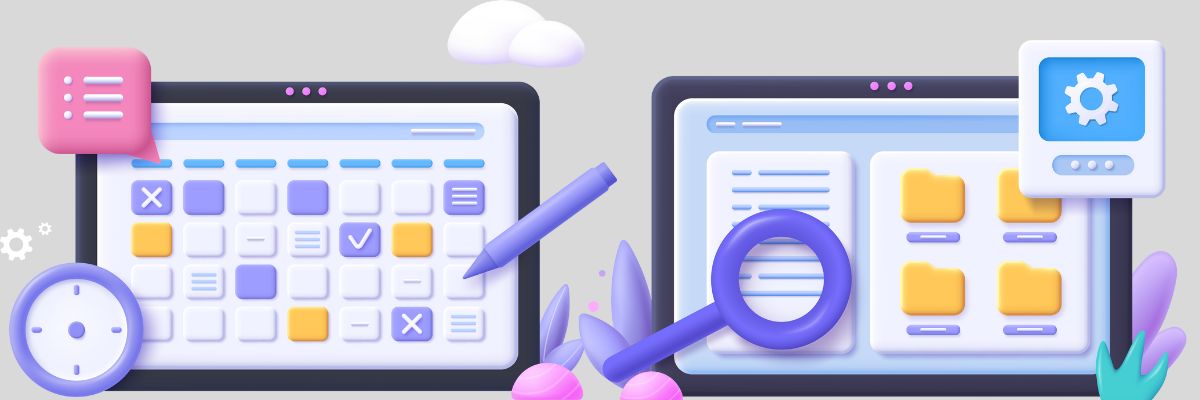Regardless of the work segment, organizing the processes and tasks that need to be executed makes a huge impact for delivering good results. A well-divided structure of the work process can be extremely useful to carry out tasks, which increases productivity and brings employees and teams closer to the goals set by the company.
That's exactly where a workflow can be useful for teams and companies, bringing fluidness to the work and establishing a clear separation of the beginning, middle, and end of several processes. In this article, we will dig deeper into what a workflow is and what the benefits of adopting it are.
What is a workflow?
A workflow is the structuring of the sequence of tasks that are part of a work process. This structuring can be done for processes that involve one or more people, depending on the type of process or the type of activity to be carried out.
More than a random number of tasks related to a process, a workflow represents the structuring of these activities in an orderly way, following a flow of beginning, middle, and end, which can be executed with effectiveness, agility, and quality by the accountable people.
Once ordered, this sequence of tasks can be structured in a flowchart or process map, to facilitate the visualization of pending, ongoing, and completed tasks.
When to use a workflow, and why
Besides creating a neat flow of tasks and raising the execution bar, workflows can be used when there is a need to better manage resources (human or financial) in a work process, or to reduce the chances of making mistakes during the execution of tasks.
In addition, with the use of software orchestration tools such as Qntrl, it is also possible to automate tasks, which means to define rules that determine the end of a task and the beginning of another, bringing agility and fluidity to the whole process.
The application of workflows can be done in several segments, making processes and collaboration even better. Let's see how this might work in practice.
Examples of workflows
Now that we know what a workflow is, let's understand, with practical examples, how this structure can help different professional segments to achieve results more effectively. Check it out:
Purchase orders
From the moment items are requested to payment time, it is possible to use a workflow as a tool that will help monitor and carry out each stage of this process.
During the buying (or selling) process, which involves negotiating steps with suppliers, requesting items (or booking, in the case of selling), payment and receipt or delivery of items, structuring these steps with technology as an ally can generate advantages like:
- Visualize what the items being ordered are
- Automate purchase approvals in a personalized way (according to department or hierarchy, for example)
- Ensure that purchases do not exceed the budget stipulated by the sector
- Get reports that will help you control expenses
Content approval
In this case, the process starts with the request of new content, then the ideation and creation stages. Once the content is drafted, it's time to review and publish it. By applying the workflow digitally, it is possible to fulfill this sequence of tasks and obtain the following benefits:
- Detail expectations about the content (type, priority, number of characters, etc.)
- Assign the task to a person or team in an automated way, with notifications via email
- Create the first versions of the requested content and send it for review and publication in an automated way
Ticket management
When it comes to customer service (whether it's IT or not), it is also possible to adopt a workflow to unify support requests and, if needed, make the transfer of tickets between agents even easier. With the automation of the steps, it is also possible to:
- Assign tickets according to customized criteria (by hierarchy, by teams, etc.)
- Monitor ticket volume and backlog
- Track metrics such as average resolution time
- Manage tickets according to priority or seriousness of the situation
- Clearly view the number of tickets to be answered, in progress, and completed
Discount or expense approval
The use of a workflow in financial sector processes can also bring several benefits. Centralizing information in a flowchart can help teams to:
- Visualize which discounts or expenses need to be approved
- Assign authorizations following team or hierarchy criteria
- Manage the list of expenses in a more effective way
It doesn't matter what the corporate segment is—the improvements on the visibility of tasks, the possibility of decreasing the number of errors, and the high chances to increase collaboration between members of the same team are common benefits of adopting a workflow.
The easier a process is visualized, the closer the team is to the results they aim to reach.
GUEST WRITER: Marina Meireles







